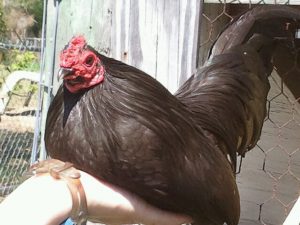 The term “Backyard Chickens” is one many people use today. The idea of having a pet help you make breakfast is growing in popularity. I am often questioned as to which breed of chicken is the best breed. When asked, I always reply, “What do you want the chicken to do?” The reason I ask is because The American Poultry Association recognizes 65 different breeds of chickens. Each breed can meet a different need. Many people will blurt out, “I want eggs!” Well, do you care what color eggs? Do you care how often you get eggs? Does the size of the egg matter? Each breed is different and there are pros and cons to each breed. Some of the more popular breeds that you can find at your local feed store during upcoming “Chick Days” are described below:
The term “Backyard Chickens” is one many people use today. The idea of having a pet help you make breakfast is growing in popularity. I am often questioned as to which breed of chicken is the best breed. When asked, I always reply, “What do you want the chicken to do?” The reason I ask is because The American Poultry Association recognizes 65 different breeds of chickens. Each breed can meet a different need. Many people will blurt out, “I want eggs!” Well, do you care what color eggs? Do you care how often you get eggs? Does the size of the egg matter? Each breed is different and there are pros and cons to each breed. Some of the more popular breeds that you can find at your local feed store during upcoming “Chick Days” are described below:
- Rhode Island Red: This is a breed that is a large-bodied bird that lays a large to extra-large brown egg. These hens are very personable and can have a great personality. This breed can become a pet in no time.
- White Leghorn: This particular bird will lay a large white egg on a very regular basis. The Leghorn is not friendly and is often referred to as “flighty”. Leghorns will not, as a general rule, become pets. They will lay you an egg almost daily, but will run from you when it’s time to collect those eggs.
- (Buff) Orpington: Usually sold in the color buff, additionally available in other colors. This is a large-bodied friendly bird. Orpingtons can become fast friends and will serve as a dual-purpose member of your flock. This means that they are great egg layers, and will also serve as a good meat bird if the desire or need arises.
- Sex-link varieties: With this breed, you will not get a breed, but they have great production. Sometimes called Red Star, or Black Star, the chicks show a difference when day old chicks. It will be easy to determine between the two. If chicks are not your thing, you can always purchase young hens that are just starting to lay.
Many people are not ready to wait five to six months to get their beloved eggs from their new pets. If that is the case, you can always check with your local extension office to inquire if a local 4-H member might have some young hens for sale. On September 30th, 4-H members from across the panhandle will have a “Chick Chain” show and Auction. Save the date and get the best breed for you!
If you have children between the ages of 5-18 (as of September 1st, 2016) and you are interested in starting a backyard flock, you may want to sign up for the 4-H Chick Chain. This program teaches youth how to raise, care for, and show chickens. Registration is open February 1st-24th via 4HOnline. Youth will receive 12, day-old pullets on March 29th. Throughout the spring and summer, youth will learn the ins and outs of poultry farming, and how to market their eggs and hens for profit. They will keep business and health records, learn about bio-security, and gain poise, confidence, and communication skills while showing their hens in the fall. For more information, contact your local UF IFAS County Extension Office, or read about last year’s program.
Poultry Breeds:
Factors Affecting Egg Production in Backyard Chicken Flocks
Intestinal Parasites in Backyard Chicken Flocks
Prevention and Control of Fowl Pox in Backyard Chicken Flocks
Vaccination of Small Poultry Flocks
- Blue Ribbon Scrapbooking and Poetry - October 16, 2024
- The History of County Fairs - July 25, 2024
- 2024 Chick Chain Show Results - May 14, 2024
